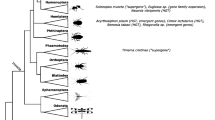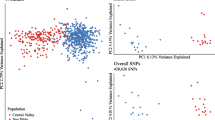Abstract:
How much variation is there in gene expression? How is this variation partitioned within and among populations? How much variation is biologically important? That is, how much of this variation affects longevity, reproductive fitness, or probability of survival? Microarray analyses can be used to accurately quantify the expression of most, if not all, genes expressed in a tissue and thus address the first question. The latter questions can be investigated by examining the patterns of variation within and among natural populations of Fundulus. These populations are large and affected by historical, demographic, and selective constraints, providing a framework for the partition of variation in gene expression within and among populations. Additionally, the well established, phylogenetic relationship among Fundulus species can be used to discern adaptive change. A phylogenetic perspective reveals changes that are produced by natural selection and therefore indicates whether this variation affects longevity, reproductive fitness, or probability of survival, i.e., whether the variation is biologically important. However, a Fundulus microarray requires DNAs encoding specific Fundulus genes. This paper provides information on the production, isolation, and characterization of 4440 Fundulus cDNAs used in microarrays. Our approach was to pick random colonies from a normalized cDNA library and then PCR amplify and sequence these genes in a 96-well format. Periodically, the isolated and sequenced cDNAs were subtracted from the normalized library. Normalization reduced the number of redundant genes from 33% to 11%, increasing the effectiveness of this screening process. From 4440 sequenced cDNAs, 49% (2173) had a match in GenBank using BlastX searches. Of these, 53% were nonredundant, yielding 1149 identified genes. These data suggest that cDNAs necessary for microarray analyses can be produced effectively from most organisms.
Similar content being viewed by others
Author information
Authors and Affiliations
Additional information
Received January 31, 2001; accepted March 30, 2001
Rights and permissions
About this article
Cite this article
Oleksiak, M., Kolell, K. & Crawford, D. Utility of Natural Populations for Microarray Analyses: Isolation of Genes Necessary for Functional Genomic Studies. Mar. Biotechnol. 3 (Suppl 1), S203–S211 (2001). https://doi.org/10.1007/s10126-001-0043-0
Issue Date:
DOI: https://doi.org/10.1007/s10126-001-0043-0




